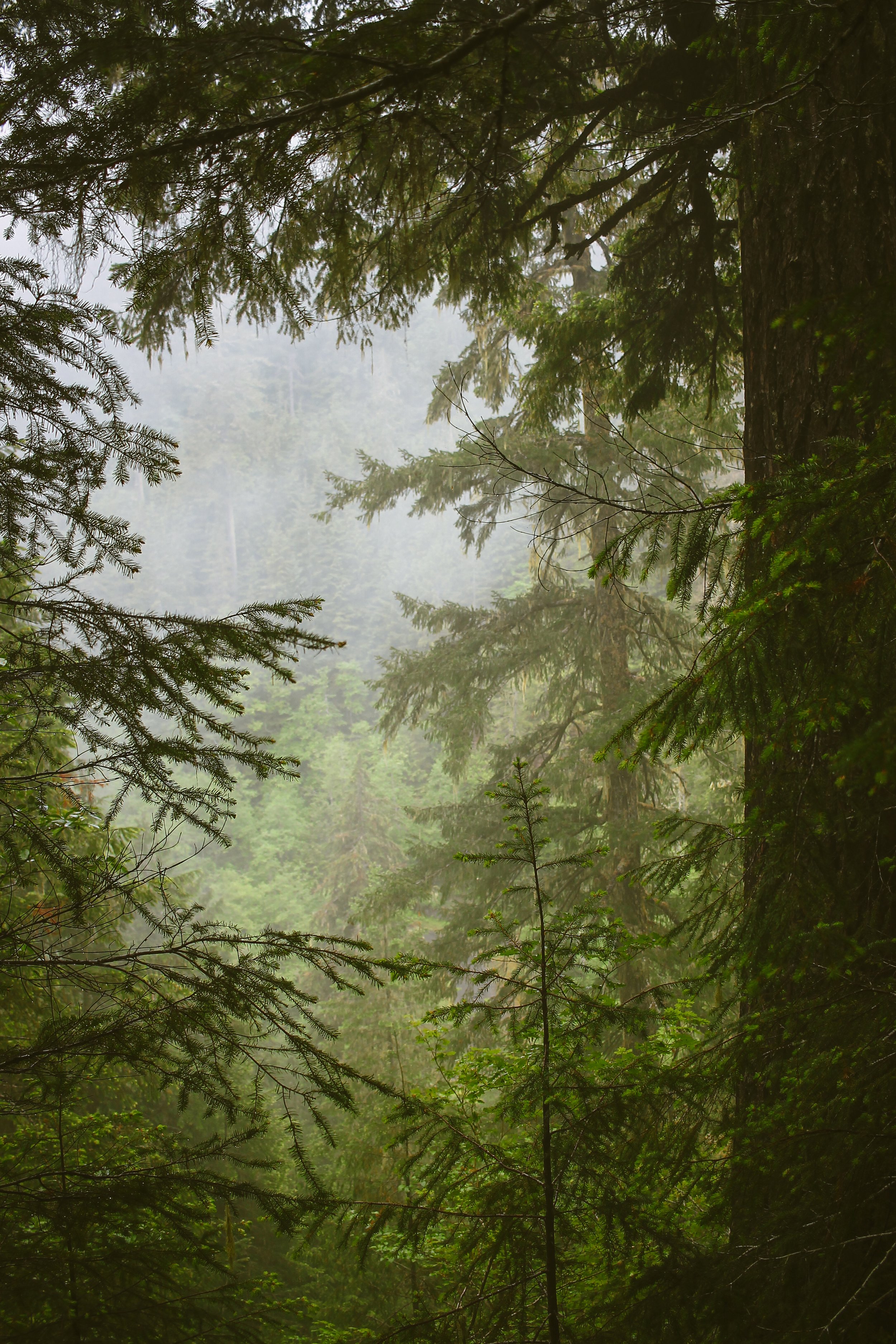The Lost Weekend is a non-competitive rally-style weekend of multi-modal adventure riding with a longform treasure hunt from Seattle to the Olympics and back. In the spirit of open-ended adventure and community, the Lost Weekend blurs the lines between bikepacking, trail riding and gravel over three days. The centerpiece of the whole affair is an OMTM-curated adventure ride staged out of Quilcene which traverses the Big Quilcene watershed, Mount Zion and the iconic Bon Jon Pass.
Friday July 28 - Sunday July 30. Seattle – Quilcene
To clarify – this is not a race. Quite the opposite in fact. This is intended to be ridden at your own pace, however you please. Less of a structured event and more of a multi-modal bike ride with friends, this is an opportunity to slow down, linger, engage with your surroundings, meet new people, snap photos, share snacks by a waterfall, take a dip in the bay, co-mingle, cross-pollinate and steep in the wonder, majesty and mystery of the Olympic National Forest.
The Full Ride itinerary departs the Rapha Seattle Clubhouse on Friday morning for the Bainbridge ferry, then continues on to Quilcene via Port Madison, the Port Gamble trail system and sublime Dabob Peninsula backroads. There are camping, motel, grocery and dinner options in Quilcene.
Saturday morning, Daytripper riders join up in Quilcene for an adventure ride with three route variations which we’ve kept intentionally modest to factor in the previous day’s ride out and following day’s ride back.
Saturday’s route lineup: 53 miles w/ 6128 ft, 37 miles w/ 4782 ft and a gravel-specific 31 mile w/ 4152 ft loop. The first two options include 6.2 miles of singletrack.
Friday + Sunday Transit Routing: 52 miles w/ 4248 ft. including 7.2 miles of singletrack + ferry.
The Full Ride crowd will stay Fri-Saturday night in Quilcene and depart Sunday to follow the transit route in reverse -- with a few variations -- back to the Rapha Seattle Clubhouse.
Treasure Hunt
We’ve teamed up with Rapha Seattle, Fat Tire, MiiR, Swift Industries, HiFi Sound Components and Austere Manufacturing for a spicy scavenger hunt over the course of all three days. This means there will be 3 caches on the way out to Quilcene, 6 caches over the course of Saturday’s ride, and 3 to be found on the way back to Bainbridge. Cues + clues will be embedded within the Ride w/ GPS routes as POI (points of interest) but will only go live the morning of each day’s ride. Don’t worry, the basic routes sans clues will be available prior to the weekend, but the clues themselves will not appear within the routes until the morning of.
Quilcene
To keep everything free and easy, it will be up to riders to arrange their own accommodations in Quilcene. That said, you will find a range of options from hotel stays, multiple established campgrounds and dispersed camping within the National Forest boundary. We’ve lined up some resources below to assist in planning. The Mt. Walker Inn rooms are going to book up fast, so if this is your idea of a good time, you’ll want to plan ahead. Both campgrounds are first-come/first-serve, so those planning on camping will likely want to head directly to one of the two upon arrival in Quilcene to stake out a spot. The other, perhaps more open-ended option is dispersed camping in the nearby Olympic National Forest, which is 4.7 miles west of downtown.
Resupply & Food
As we mentioned there are options for grocery, food, bevvies and coffee in Quilcene. Peninsula Foods is well-stocked convenience-grocery in town with all the standards. Quilcene Village Store on the north end of town has a curiously curated selection of cheeses, charcuterie, pastries, smoked meats, produce, tamales and other delectables in addition to more conventional small-grocery fare. Quilbilly’s Restaurant & Taphouse is just down the street serving breakfast, burgers, pizza, salads and offers an unexpectedly well-rounded taplist and lineup of canned craft brews. Do note that they close at 7:30pm, so plan ahead. Additionally you will find both the Quil Bean and PNW Press coffee/espresso carts on the west end of town.
Twana/Skokomish Peoples
The Hood Canal drainage on the Olympic Peninsula’s east side encompasses Skokomish or Twana territory. In translation Skokomish means “people of the big river”. The Skokomish were the largest of at least nine separate tuwaduq speaking peoples who collectively identified as tuwaduq, which has since been anglicized to Twana.
The nine Twana communities were closely related, shared common tuwaduq language traits and lived between the Olympics and Hood Canal, maintaining distinct villages and customs. These nine bands were categorized by their geographic locations, many of which are echoed in the contemporary landscape. Twana communities included those at Quilcene, Skokomish, Dosewallips, Duckabush, Dabob, Tahuya, Duhlelap, Vance Creek and Hoodsport. The nine Twana communities inhabited approximately 33 villages, tracing Twana presence in the Hood Canal region back at least 12,000 years. The Skokomish were one of the largest of the Twana communities and claimed six separate villages along the Skokomish River.
The Olympic Mountain Range, in addition to the Hood Canal waterways, holds a special significance for past and present Skokomish. Twana oral history recalls that Mount Constance and Rainier were once married to Mount Dosewallips. During a heated argument, Rainier decided to leave her husband and relocate southeast to the Cascades. In a hurry, she fumbled, dropping salmon into the rivers along Hood Canal as she left. This is how the Skokomish, Hamma Hamma, Duckabush and Dosewallips Rivers became plentiful with available fish. The Duckabush River and its Twana village were known as the ‘place of the crooked-jawed salmon’, a reference to the region’s Coho salmon.
It was not uncommon for additional tribes to visit Twana lands and vice-versa via canoe and intricate and ancient trail systems crossing the Olympics, which were generally understood to be communal lands. The Quinault came from the Pacific coastline, over 100 miles by foot to attend Twana potlatches along the Hood Canal. Twana potlatches drew large crowds well into the late 1800s. In addition to social and ceremonial events, there exist historical accounts of Twana individuals at Lake Quinault and the mouth of the Columbia where they traded dried clams for mountain goat wool originating from tribes further inland in the Cascades. As a result of their intense trade networks and proclivity for marriage alliances, the Twana spoke many different dialects and were no strangers to the other nations that called the Olympic Peninsula home.






























